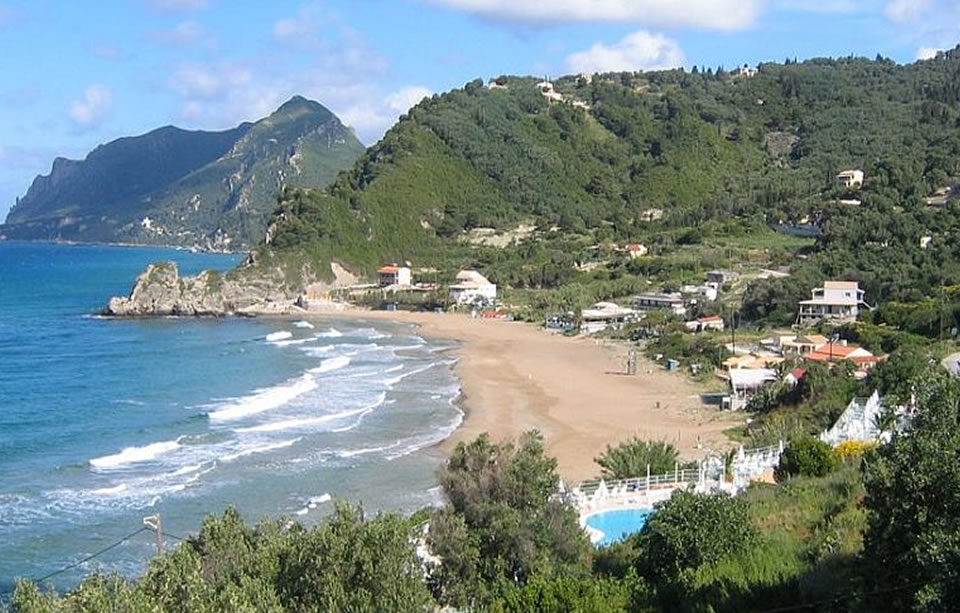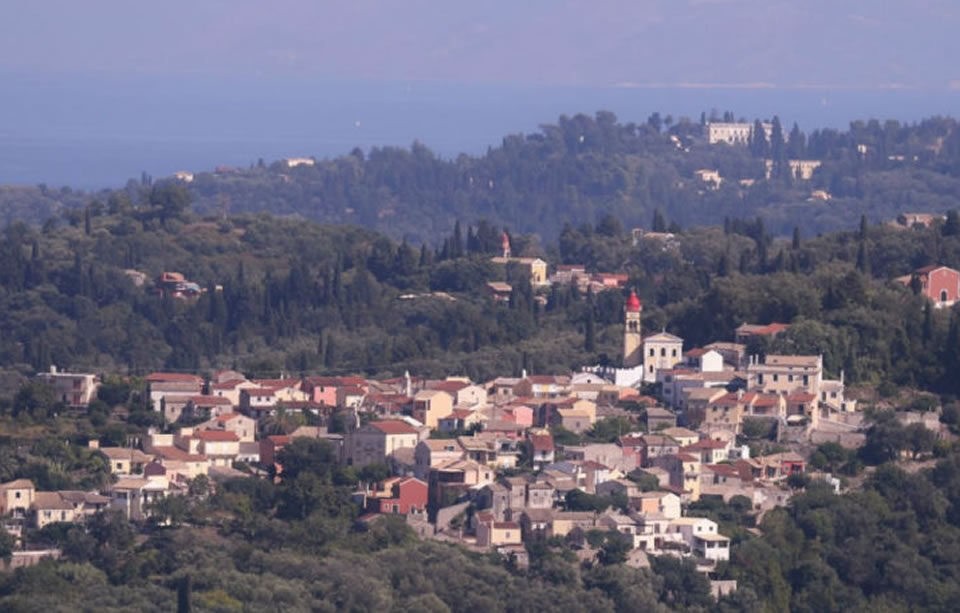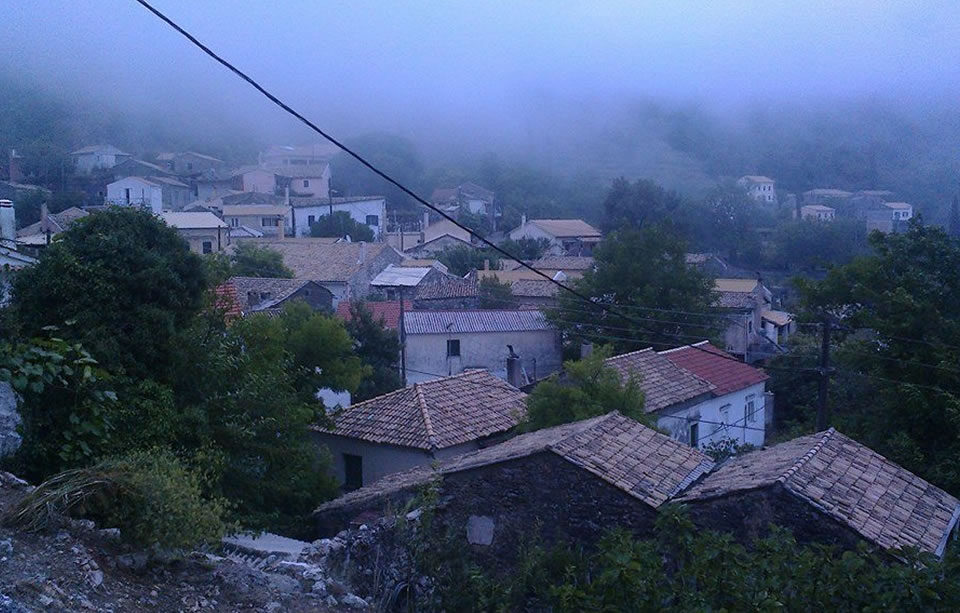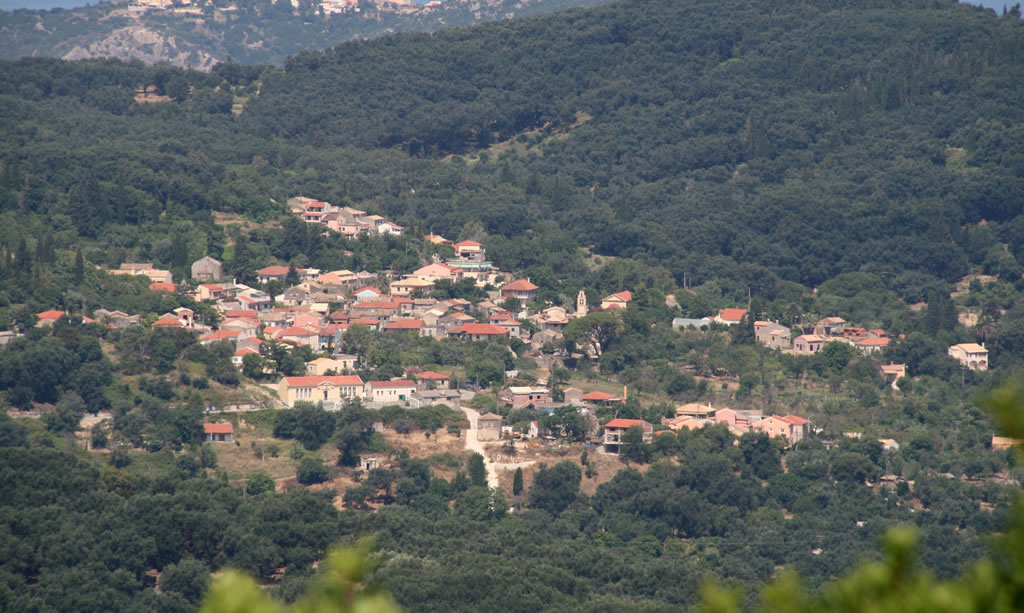
Alimmatades

Castellani of Gyros
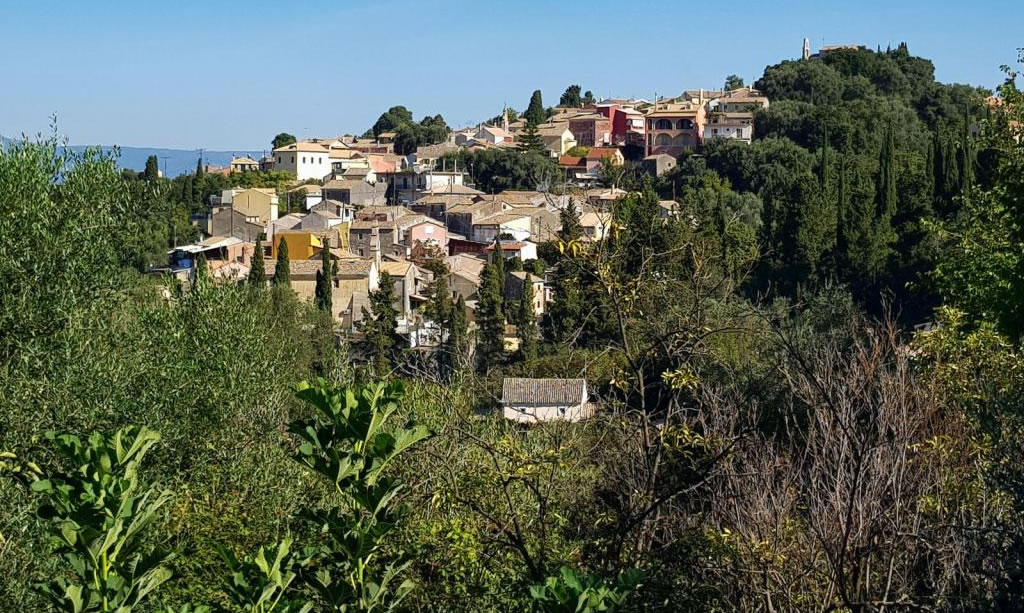
Gastouri is a traditional village in the middle of Corfu, which is world famous as one of the most important attractions of Corfu, since Achilleio, is located in the village. The palace of Princess Sissy overshadows the rich historical and the entire cultural identity of the village in the eyes of the visitor. The administrative unit of Gastouri includes three essential settlements, the main village of Kastri or Kasteli, the settlement of Pachatika and the coastal Perama with the districts of Kopani and Katsaratika. The total number of residents amounts to approximately 1,400, according to the latest census (2021), who, as in the rest of Corfu, work in the public and private sector, work in tourism while at the same time cultivating their fields. Besides the production of fruit and vegetables and wine for family use, their main agricultural work concerns the olive grove and olive oil. Wine is produced and consumed at home.
During evening twilight, those who are in Gastouri will be lucky enough to hear the characteristic songs of the goon, the cuckoo and the owl. Crows and hawks find refuge on the hill of Agia Kyriaki. In the fields and rural roads, during the summer, one can meet dahl's whip snake, Balkan whip snakes, Eastern Montpellier snakes, willows and woodpeckers. In the area, and especially in Pachatika, there are few laudakia stellio, as the area has many stone walls and old houses, but also many bare rocks in the fields and estates. Corfu’s Olive Grove has a dominant position in the region both in the economy and in the topography. This picture is completed by holly trees, orange trees, lemon trees, prickly pears, several almond trees and a great many cypresses, both female and male.
In Gastouri there are a total of 12 parish churches and chapels, some of which are private.
Holy Theotokos Odigitria is the central church of the village which is solemnly celebrated on August 23rd. The holiday starts from August 21st and on the 22nd the litany of the icon of the Virgin Mary, a custom for the last 40 years, as in the past the litany was held on that day. On August 23rd, a great festival takes place, which is the only one in Gastouri.
Agios Nikolaos in Pachatika is the second but very important church. A historical detail is worth noting. Before the war, Gastouri had two parishes defined by the two aforementioned churches. After 1945 they were unified, which is the reason for the official title is today: "Parish of the Holy Theotokos and Agios Nikolaos" with two seats of priests. The church of Agios Nikolaos operates quite regularly, every other Sunday.
Agioi Anargyri is the church of the village cemetery, built around the mid- 1980s , when all the small cemeteries of the village were united into one, as in the old days in most villages of Corfu, there were family graves in small private churches,
Agios Markianos in Pachatika is a very important church as it is considered the oldest in the village and the only one in Greece that is dedicated to Agios Markianos, bishop of Syracuse, whose name day is on October 30th. Legend has it that a resident of the village proposed marriage to a girl from Syracuse during the period of the Venetian rule. The girl started the long journey from Sicily but when she arrived in Corfu she realized that the man who was waiting for her had died. Then she decided to stay in Gastouri the place where she would live with her husband, and to become a nun. She dedicated her monastic life to Agios Markianos, the martyr who was ordained a bishop by the Apostle Peter and sent to Syracuse where with his prayer he destroyed the temples of the idols and performed many miracles, and as a result many pagans believed. During the cleaning of the church's frescoes 30 years ago, an icon of Agios Markianos, which dates back to the 17th century, was reveald.
Agia Kyriaki is the chapel located on the hill of the same name in the village, quite famous as both Princess Sissy and the later owner of Achillii, the German Kaiser William II, used to climb there to admire the view. The chapel belonged to the Voulgaris family, a few decades ago passed into the hands of the Church. It operates four times a year.
Archangel Michael the Taxiarchi, is another chapel located on a hill within the village and from a private one it now became a parish church and functions occasionally.
Nativity of the Virgin Mary, another chapel in the Kopani area near the mansion of the Voulgaris family , in whose ownership it is until now. It operates twice a year, on September 8th when the Birth of the Virgin Mary is celebrated and on the second day of Easter with a litany.
Agii Theodori, a private chapel in the Kopani area, below Achilleio. It operates twice a year, on the feast of Agii Theodori on the Saturday of the first week of Lent and Agia Varvara.
Agia Sophia in Perama, it is a chapel built on a very small rock in the sea.
Agios Ioanns Rizikaris, today it is a ruin of a private church of the Rizikaris family. Those relics that were saved are in the church of Theotokos of Odigitria.
Zoodochos Pigi, a private church belonging to the Koletsia family in the area of Katsaratika on the road to Perama. It operates two or three times a year on its feast day on Easter Friday.
Agios Spyridon, a church dedicated to the patron saint of Corfu located in the centre of the village.
Epitaph procession on Good Friday.
Litany of the icon of the Resurrection on the evening of Holy Saturday, which traditionally attracts a number of officials and famous people, such as the former prime ministers of Greece Konstantinos Karamanlis and Andreas Papandreou.
Litany of the icon of the Resurrection on the second day of Easter, "New" Monday.
The Litany of the Sunday of Thomas it has always been an important historical event for Gastouri. This litany arrives at Achilleio, where a dedication is held according to tradition, as was done at the time when the Kaiser was at Achilleio .
Litany on the eve of the Ascension inside the Pachatika settlement without the participation of the Philharmonic.
The great two-day festival of the Holy Theotokos of Odigitria on August 22nd and 23rd, is the only festival of Gastouri.
The area's water comes from two sources. The first and oldest is located in the plane tree in Pachatika and it is a spring whose history is lost in the depths of the centuries. Today it bears the name of the empress of Austria and Hungary Elisabeth to remind the visitor that here the "sad princess" loved to stop to refresh.
And the other source of the village, from drilling, is located at the descent of the road from Achillio to Benitses, at the Montagnola hotel .
Point of historical interest of the village is definitely the Achilleio, a very important palace and museum that was built in 1891 and is a point of reference for all of Corfu.
Gastouri, as in all the villages of the island, there were dozens of olive press buildings that operated until the 70s. Today, there is no traditional olive press building in operation, but its tools adorn homes and businesses, reminding us of the work of old time.
From the past however, apart from the olive press, a great legend is preserved about a family, which around 1850 lived in the hollow that the plane tree had in Pachatika. References have indeed been found in newspapers of the time that confirm the story, about an old woman who lived in the hollow of the plane tree. After all, this old woman was the inspiration of a Scandinavian painter and traveller, who, as a guest at the Voulgaris mansion, met her and painted her. This painting is currently in the possession of the family.
Another story of the area, according to the book of the author Gerasimos Chytiris: "Notes of Corfu Town" talks about a fairy whose handkerchief fell on the ground and was found by a Gasturian, as a result of which he married her, had a family and children until moment when the fairy realized that she cannot live with mortals and disappeared.
The custom of the “fires” (lampatina) exists in many villages of Corfu and is focuses on the feast of Agios Ioannis of Lampataris or Klydon. In Gastouri the custom was observed for many years and took place in three churches of the village, Archangel Michael Taxiarchis, Agios Nikolaos and Agios Spyridon on the eve of the respective holidays. The custom over the years paused but did not disappear. In recent years, the children of the village again lit fires outside Agios Spyridon, showing that traditions are too strong to be lost.

